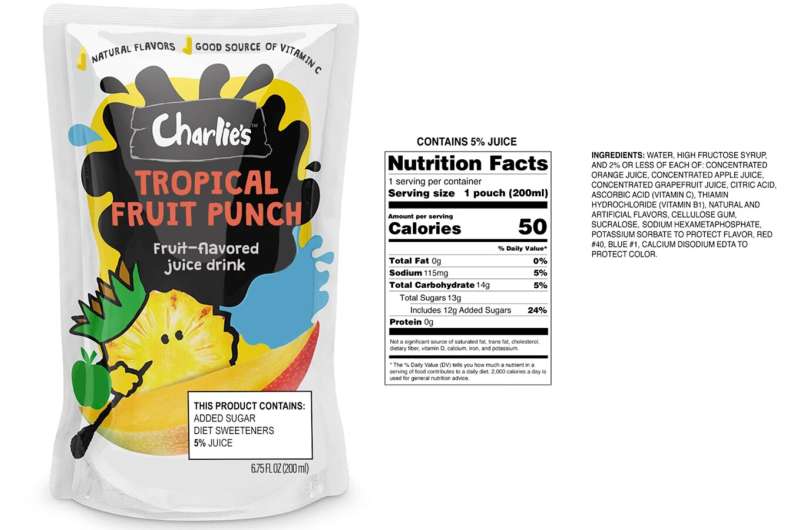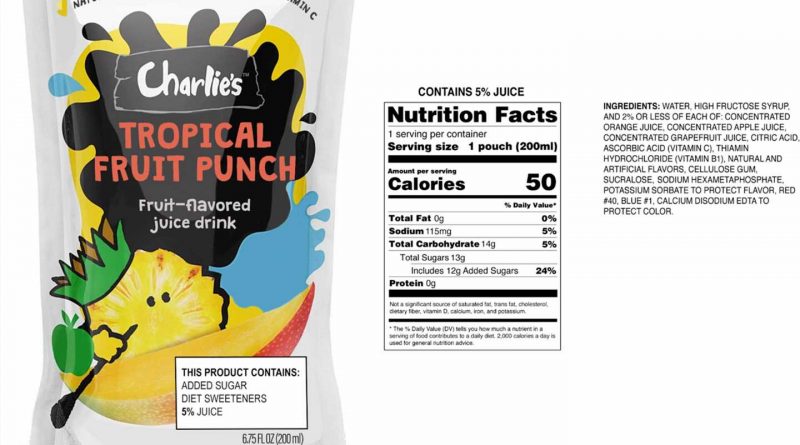doxycycline hyclate tablets acne

Adding front-of-package ingredient disclosures significantly increases caregivers’ ability to identify the presence and absence of common ingredients in sweetened fruit drinks and flavored waters and unsweetened 100% juice, according to a new paper from researchers at the Rudd Center for Food Policy and Health at the University of Connecticut and New York University.
The study, published in Public Health Nutrition, demonstrated that standardized disclosures improved caregivers’ understanding of ingredients and reduced perceived healthfulness and intent to purchase sweetened drinks, including drinks offered by a novel brand that is not currently available in the United States, as well as an existing U.S. children’s drink brand purchased by the majority of caregivers.
Child health experts recommend that children under age 5 should not have any drinks that contain added sugar or diet sweeteners, yet 45 percent of 2- to 4-year-olds consume sweetened drinks, primarily fruit-flavored drinks, on a given day. Previous research has shown that marketing on product packages, what is metronidazole used for in animals including fruit images and nutritious-sounding claims (e.g., “100% Vitamin C” and “All Natural” ingredients), make it difficult for caregivers to know when drinks contain added sugar or diet sweeteners and lead them to infer that sweetened children’s drinks are healthy for their children.
This study is the first to demonstrate that a standardized front-of-package ingredient disclosure that indicates the presence or absence of diet sweeteners, added sugar and percent juice on both sweetened and unsweetened children’s drinks would correct these common misperceptions.
In an online randomized controlled experiment with 648 U.S. caregivers with young children (1-5 years old), participants viewed packages of eight different children’s drinks, including sweetened fruit drinks and flavored waters (these drinks contain added sugar and/or diet sweeteners with little or no juice), unsweetened 100% juice and juice/water blends (juice diluted with water but no added sweeteners). Participants were randomly assigned to view the drink packages either with or without the front-of-package ingredient disclosure statement.
The disclosure consisted of a white rectangle with black text indicating whether or not the product contains added sugar and diet sweeteners and percentage of juice. After viewing the drink packages (including the nutrition facts panel and ingredient list) caregivers indicated whether the product contained each ingredient and rated their perception of drink healthfulness and intentions to purchase it for their child. Products included a novel drink brand (adapted from a brand available in New Zealand) and a popular U.S. children’s drink brand (Capri Sun).
“Most parents don’t want to give their child drinks with added sugar or diet sweeteners, but companies make that very challenging. We show that clearly disclosing ingredients on the front of children’s drink packages cuts through the marketing hype and helps parents recognize what is really in the drinks they buy for their children,” says Fran Fleming-Milici, Director of Marketing Initiatives at the Rudd Center. “Requiring standardized front-of-package ingredient disclosures is a promising strategy to reduce children’s sweetened drink consumption.”
Additional key findings:
- Disclosures were particularly effective at helping caregivers recognize children’s drinks that contain diet sweeteners. For example, 76% of caregivers who saw a Capri Sun Roarin’ Waters (flavored water) package with the disclosure recognized that the product contained diet sweeteners, compared to only 45% who saw the existing package without the disclosure.
- The disclosures were effective even when on packages with common nutrition-related claims and images of fruit.
- The disclosures reduced perceived healthfulness and intent to purchase sweetened fruit drinks and flavored waters, but they did not increase perceived healthfulness or intent to purchase 100% juice or unsweetened juice/water blends.
- The disclosures were consistently effective across all demographic groups examined, including education level and race/ethnicity.
Current labeling regulations and practices fail to provide caregivers’ the information they need to choose healthier drinks for their children. These findings can help inform efforts to develop front-of-package information to help consumers identify healthy foods when grocery shopping, as outlined in the U.S. White House Strategy for Hunger, Nutrition and Health.
“Transparency is key for consumers’ ability to trust food labels,” says Jennifer L. Pomeranz of New York University’s School of Global Public Health. “The factual disclosures tested in this study are legally sound and Congress should require the FDA to update food labels accordingly.”
More information:
Frances Fleming-Milici et al, Effects of a front-of-package disclosure on accuracy in assessing children’s drink ingredients: two randomised controlled experiments with US caregivers of young children, Public Health Nutrition (2023). DOI: 10.1017/S1368980023001969
Journal information:
Public Health Nutrition
Source: Read Full Article
